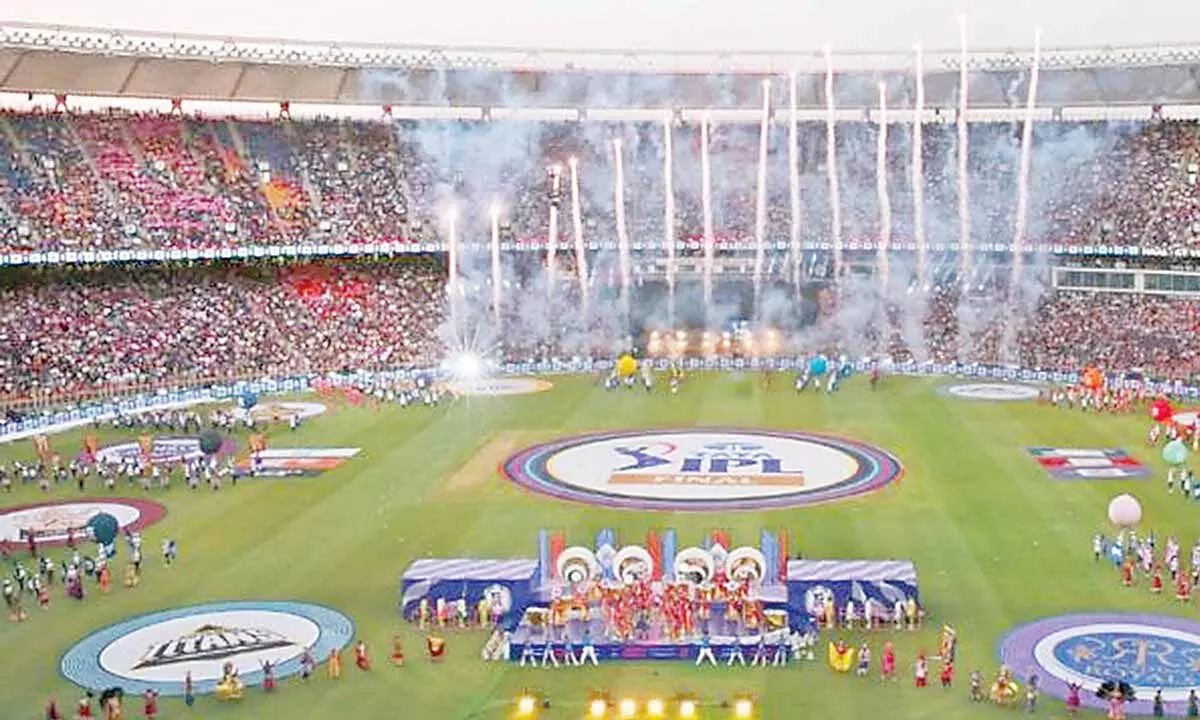Three cheers from IPL bidding
BCCI is a natural winner. The second winner is Viacom, which will get new subscribers on the basis of IPL and third and unlikely winner from the bid outcome is the Sony-Zee combine
image for illustrative purpose

Mumbai: There are three cheers from the recently concluded bidding for various categories of IPL for next four years. They include BCCI, Viacom and Sony-ZEE combine.
Talking to Bizz Buzz, N Chandramouli, CEO, TRA Research, says, "There are three victors of the IPL bid outcome. BCCI is a natural winner with the license fees touching astounding peaks. The second winner in this is Viacom, which will get new subscribers on the basis of IPL."
The third and unlikely winner from the bid outcome is the Sony-Zee combine, having won in their inability to win the bid. It takes away pressure from the third entity to try to make money from a difficult proposition, due to the high cost of acquisition of rights, he said.
BCCI has sold media rights for IPL 2023-27 seasons for Rs 483.9 billion, about 3X 2018-22 cycle. Disney has bagged TV and 16.7 per cent on per match basis. For IPL 2023-27 seasons, Disney/Star has won TV rights for Rs 235.8 billion (Rs 575 million/match), Viacom 18 has bagged digital rights (package B + C) for Rs 237.6 billion (Rs 580 million/match) and Viacom 18 + Times Internet has won overseas rights for Rs 10.6 billion (Rs 26 million/match).
Star (Disney) garnered ad revenues of Rs 30 billion (Rs400 million/match) and subscription revenues of Rs 7.5 billion (Rs100 million/match) for IPL 2022. Its winning bid of Rs575 million/match for IPL 2023-27 implies cost of Rs610 million/match (incl. production costs). A 50 per cent increase in per match monetization (2023-27 average) versus IPL 2022 is required for break-even. Disney is betting on IPL continuing to gain share in TV adex, further widening of ad yields between IPL and GECs, no meaningful TV-to-digital shift for IPL and no impact of more matches (94 matches from 74 now) on per match monetization.
Hotstar garnered ad revenues of Rs 11 billion (Rs150 million/match) and subscription revenues of Rs12 billion (Rs160 million/match) for IPL 2022 season. Viacom 18's winning bid of Rs 580 million/match for IPL 2023-27 implies cost of Rs630-650 million/match including production/hosting costs. It looks like Viacom 18 would incur losses (deemed customer acquisition cost for building a strong streaming platform) in the initial years and perhaps break-even in 2026/27 seasons.
Irrational competition poses risk to the above assumptions—for instance, Viacom 18 (RIL) can make IPL free on its OTT platform (higher ad revenues could offset loss of subscription revenues) to accelerate TV-to-digital shift compelling Star to put IPL on Free-to-Air channels, competition between Disney and Viacom 18 for ad dollars could reduce bargaining power of both versus that enjoyed by Star during 2018-22 when it owned both rights (TV+digital).
With IPL media rights sold for Rs484 billion and assuming central sponsorships of Rs65 billion, we estimate the central revenue payout of Rs5.5 billion/year (versus Rs2-2.5 billion /year earlier) from BCCI to each team. Revenues of an IPL team could increase to Rs6.25-7 billion /year (incl. local sponsorship of Rs0.5-1 billion and gate fees of Rs0.3-5 billion) from Rs3-3.25 billion. Assuming 33 per cent increase in player fees cap to Rs1.2 billion and unchanged franchise fees (20 per cent of revenues), net profit of an IPL team could increase to Rs2.7-3 billion /year (2023-27 average) from Rs1-1.1 billion.
An IPL franchise's revenue base consists of central (media and sponsorship revenues) and local revenues (local sponsorship, ticket, licensing and merchandising revenues). BCCI shares 50 per cent of the central revenue pool with the franchises, split as 45 per cent shared equally among the teams, 5 per cent distributed based on rankings. Local sponsorships could be in the range of Rs300-600 million/year (2018-22) depending on the strength of the franchise (MI and CSK at the top) while ticket sales could generate Rs250-300 million in a normal year. Net-net, central revenues would account for 70-75 per cent of total franchise income (2018-22).
The cost base consists largely of franchise fees, players and staff fees, and other operating expenses. At present, 20 per cent of total franchise income (central + local) is paid as franchise fees to BCCI. Player fees are subject to the cap announced by BCCI every year (Rs900 million for IPL 2022). Other operating expenses include support staff fees, air travel, hotel and miscellaneous expenses of Rs100-150 million.
In the 15th edition of IPL, most of the old franchises are likely to be profitable as central revenues (14-15 per cent CAGR over FY2009-22) have grown faster than the costs, particularly player fees (9 per cent CAGR in player fees cap). However, IPL franchises still have a long way to go in terms of reducing their dependence on central revenue (66-75 per cent salience) when compared to some established foreign franchises (40 per cent salience). Since the franchises have no control over central revenue share, scaling up local revenues becomes critical for them.
IPL has a total viewership of more than 350 million people. Jay Kumar Doshi, Senior VP Equity Research at Kotak Institutional Equities, says, "We estimate 100 million of this total population to be serious sports fans, of which 40 per cent are estimated to play paid online contests, resulting in a TAM of 40 million. About 10 per cent of Dream11 players (10 per cent of 120 million) participate in paying contests, implying a 30 per cent penetration."
According to All India Gaming Federation, fantasy sports is the fastest growing segment of the real money gaming market, growing by over 5X in past three years to reach 100 million users.

